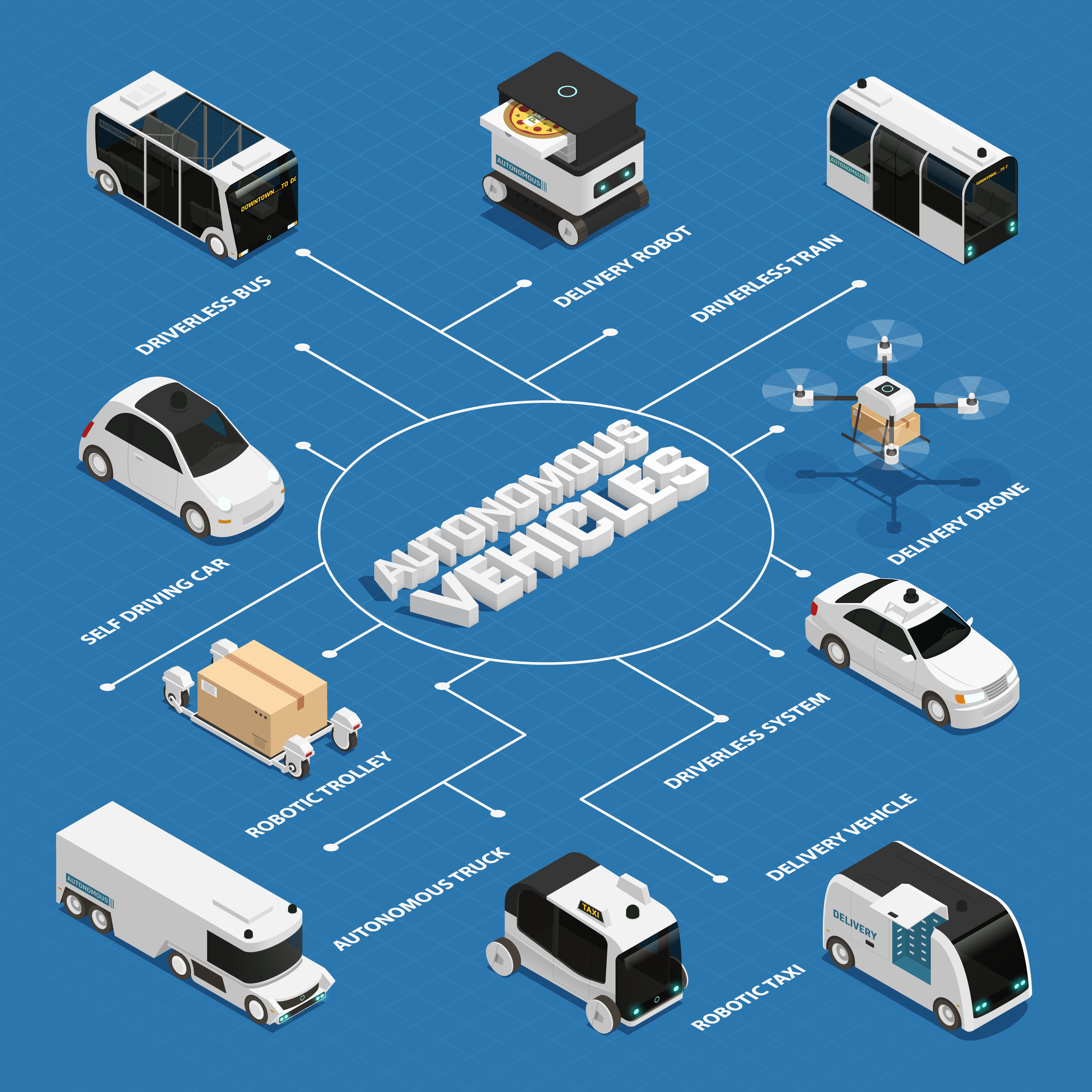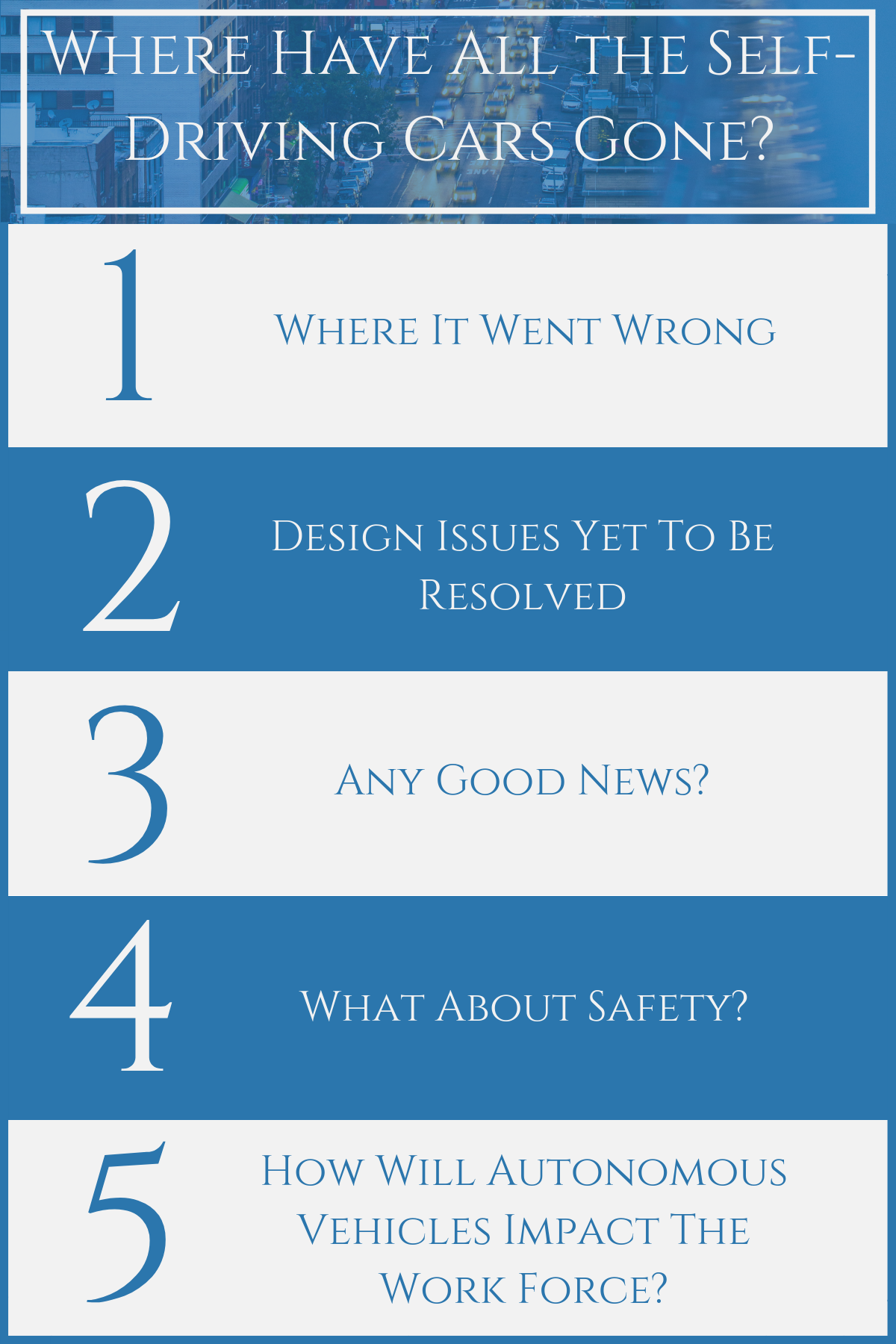19 Feb Where Have All the Self-Driving Cars Gone?

855-368-5502
Where Have All the Self-Driving Cars Gone?
By: Adam M. Matheny
The automobile manufacturing community has been telling us for years that by the year 2020 autonomous vehicles or AVs would be readily available and taking over the roads within the decade. So, what happened? 2020 is just around the corner, and instead, the entire concept seems to be going in the wrong direction. The problem? Futuristic technology meets the mayhem of modern roads in real-time.
Where It Went Wrong
GM was expected to roll out Cruise Automation, which was to be their AV division, but currently, the entire project is many years behind schedule. Ford, Waymo (Google), and Tesla have all tested prototypes that couldn’t pass driver’s ed if they tried.
Safety is one of the most commonly stated concerns. In March of 2018, an AV operated by Uber (traveling at 40 mph) struck a pedestrian in a crosswalk killing them instantly. The AVs radar was confused by the bicycle the person was wheeling beside them. Uber immediately suspended all AV operations.
Automakers like GM and BMW say the concept of autonomous vehicles is not only one of the biggest challenges facing today’s auto engineers, but also may end up wasting billions of dollars chasing an idea we do not have the technology to turn into a reality.
Design Issues Yet to Be Solved
There are various reasons why AVs are not currently viable, starting with LIDAR, which is the acronym for Light Detection and Ranging. This system uses sensors that send out rapid light pulses to create a map of the surroundings of the vehicle, covering a full 360°. This is the most common system in use today.
Some vehicles add in cameras, GPS antennas, even radar to help create a more accurate image of what’s going on around the vehicle in real time. One problem that has yet to be solved is that LIDAR struggles in inclement weather like heavy rain or snow, it also struggles in states that use the plastic bumps instead of paint to mark their roads.
According to Austin Russell, CEO of Luminar a LIDAR manufacturer, current technology isn’t even close to developing a system that can function in adverse weather conditions. Humans rely on visual cues for safe driving, but AV engineers believe they can create a system that learns from real-life situations their systems encounter to improve their driving ability.

Any Good News?
To date testing in areas where the roads are not overly congested has been moderately successful. Of the 100 plus accidents involving AVs, the majority have been minor and the result of other motorists or pedestrians. According to Waymo (Google), they have run over 7 billion miles of computer simulated driving with great success. They have also run 600 test cars in 25 different cities. Both Silicon Valley and Phoenix are popular testing places. Several places in Texas use autonomous buses to shuttle people from parking lots at stadiums on closed roads. Washington D.C. is set to allow AVs on their roads in 2020 provided they have a backup human driver and engineer on board.
What About Safety?
Safety is the biggest concern stated by most Americans, yet a computer will never be distracted by texting, talking on the phone, or drive while drunk, nor will it engage in road rage. Yet an AV does not have a conscience and would not be capable of making choices such as choosing between hitting five people crossing the street or one person by veering off the road. Many believe that until there is a way to build a moral “conscience” into the AV, we should not allow them.
While many automakers still say the time will come when AVs do rule the road, several significant problems must first be overcome, including:
- Fixing all design flaws
- Major changes in the auto insurance industry
- Substantial changes in traffic laws in every state
- New power forms to reduce and eliminate pollution fossil fuel powered AVs by the thousands could cause
- The development of control software that can’t be hacked
But, by far the most difficult challenge faced by the autonomous vehicle industry is that of convincing the buying public that AVs are safe.
How Will AVs Impact the Work Force?
Currently, over 2 million people in the U.S. alone make a living driving anything from private cars for services like Uber and Lyft, to taxis, buses, and trucks. Autonomous vehicles could potentially put these people out of work. While AV developers and engineers all say human drivers would still be needed, others are not so easily convinced. For example, a study produced by the University of California, Berkeley, shows that up to the 300,000 truck drivers could lose their jobs to AVs.
Taxi companies would no longer need drivers, nor would services like Uber and Lyft. There would be no need for driving instructors, parking attendants or bus drivers. The list goes on, but in time we would all adjust as one day the autonomous vehicle will dominate the highways and byways.

